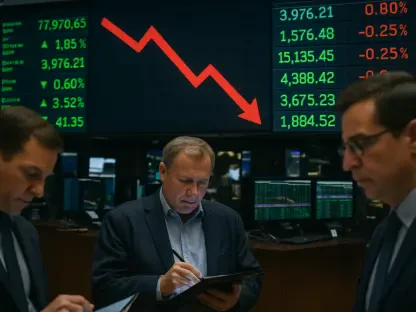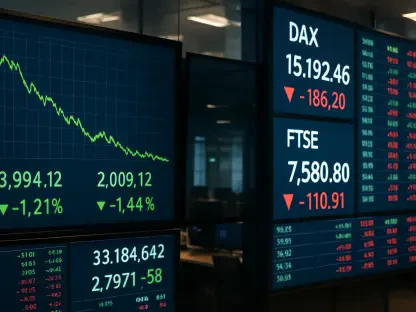In the heart of Cuba’s ongoing economic struggles, a pivotal reform—a floating exchange rate system—remains elusive despite repeated government promises to implement it, leaving the nation in a state of uncertainty. This critical policy, intended to address severe currency depreciation and bring stability to the national economy, has been a focal point of discussion among policymakers and experts alike. Initially heralded as an imminent change by the Cuban leadership, the plan has faced continuous setbacks, leaving the nation grappling with a widening gap between official and informal market rates. As the Cuban peso loses value in the black market, the delay in adopting a flexible exchange rate regime underscores deeper systemic issues that hinder progress. This persistent postponement not only fuels skepticism about the government’s capacity to enact meaningful reform but also raises urgent questions about the future of economic stability in Cuba. The complexities of this situation reveal a nation caught between the need for change and the challenges of creating the right conditions for it.
Unfulfilled Promises and Economic Roadblocks
The Cuban government’s commitment to introducing a floating exchange rate has been met with consistent delays, casting doubt on the timeline for reform. Prime Minister Manuel Marrero Cruz initially signaled that the policy would be rolled out soon, with expectations set for the current year. However, as months have passed with no tangible progress, the administration has pushed consultations and planning into late this year, suggesting that no significant changes are likely before the next year. This pattern of postponement reflects a broader trend of failing to adhere to economic roadmaps, as the government struggles with creating the necessary macroeconomic environment for such a transformative policy. The persistent depreciation of the Cuban peso in informal markets exacerbates the urgency, yet the leadership appears cautious, prioritizing further internal discussions over immediate action. This hesitation has left businesses and citizens in a state of uncertainty, unable to plan for a future where currency values might stabilize through a unified exchange system.
Beyond the delays, the structural challenges facing Cuba’s economy present formidable barriers to implementing a floating exchange rate. Experts point to a lack of institutional readiness and insufficient liquidity in the banking system as critical obstacles. Without these foundational elements, any attempt to shift to a flexible regime risks further volatility rather than delivering the intended stability. The Central Bank’s limited capacity to manage fluctuations in currency value adds another layer of complexity, as does the absence of transparency in adjustment mechanisms. These systemic issues are compounded by the government’s own acknowledgment that current conditions are far from ideal for such a policy shift. As a result, the gap between official exchange rates and those in the informal market continues to widen, fueling inflation and eroding purchasing power. The ongoing failure to address these core problems suggests that even with political will, the path to a floating exchange rate remains fraught with operational and economic hurdles.
Expert Insights and Systemic Challenges
Cuban economists have been vocal about the critical need for a floating exchange rate to resolve deep-seated macroeconomic instability. Renowned voices in the field, such as Mauricio de Miranda, argue that without tackling the exchange rate issue, broader economic recovery remains out of reach. The consensus among analysts is that a unified system could help align official rates with market realities, curbing the rampant depreciation of the national currency. However, these experts also caution that success hinges on establishing trust in institutions and ensuring the government’s credibility in managing the transition. The persistent delays signal to many that such trust is lacking, as the state struggles to balance the need for reform with the risks of economic disruption. This skepticism is further fueled by the lack of clear communication from authorities about how and when the necessary conditions for a floating rate might be achieved, leaving the public and investors wary of future promises.
Adding to the complexity, the insights of economists like Pavel Vidal highlight the importance of robust mechanisms to support a flexible exchange rate system. Vidal emphasizes that factors such as banking system liquidity and the Central Bank’s ability to intervene during periods of volatility are non-negotiable prerequisites. Without these safeguards, any move toward a floating rate could deepen existing economic woes rather than alleviate them. The government’s cautious approach, including plans for further consultations with political and social organizations, suggests an awareness of these challenges, yet it also underscores a lack of preparedness to act decisively. Meanwhile, firms providing corporate services in Cuba warn that the absence of regulatory changes in the near term dims hopes for immediate relief. This combination of expert analysis and institutional inertia paints a sobering picture of an economy in limbo, where the promise of reform remains just out of reach due to entrenched systemic barriers.
Navigating the Path Forward
Reflecting on the journey so far, the Cuban government has faced repeated setbacks in its efforts to introduce a floating exchange rate, with timelines slipping despite public commitments. The administration’s struggle to establish the right economic and institutional conditions has become a recurring theme, as the Cuban peso continues to lose ground in informal markets. Expert warnings about the need for transparency and readiness have echoed through discussions, while the gap between official and real-world rates has grown ever wider. Each delay, from initial announcements to later consultations, has highlighted the depth of structural challenges that keep reform at bay. The cautious stance adopted by leaders, while perhaps pragmatic, has often left stakeholders frustrated by the lack of progress. This period of stagnation has revealed how intertwined currency policy is with broader economic stability, underscoring the difficulty of implementing change in a state-controlled system.
Looking ahead, the focus must shift to actionable steps that can pave the way for a successful transition to a floating exchange rate. Building institutional trust and enhancing the Central Bank’s capacity to manage volatility should be prioritized, alongside efforts to boost liquidity in the financial system. Transparency in communicating timelines and strategies will be crucial to regaining public and investor confidence. Additionally, the government might consider phased reforms or pilot programs to test mechanisms before a full rollout, minimizing risks of disruption. International support or expertise could also play a role in addressing systemic gaps, provided it aligns with national priorities. As Cuba navigates this complex landscape, the emphasis should be on creating a sustainable framework that not only introduces a flexible exchange rate but also supports long-term economic resilience. These steps, though challenging, offer a potential roadmap to finally move beyond delays and toward meaningful reform.









